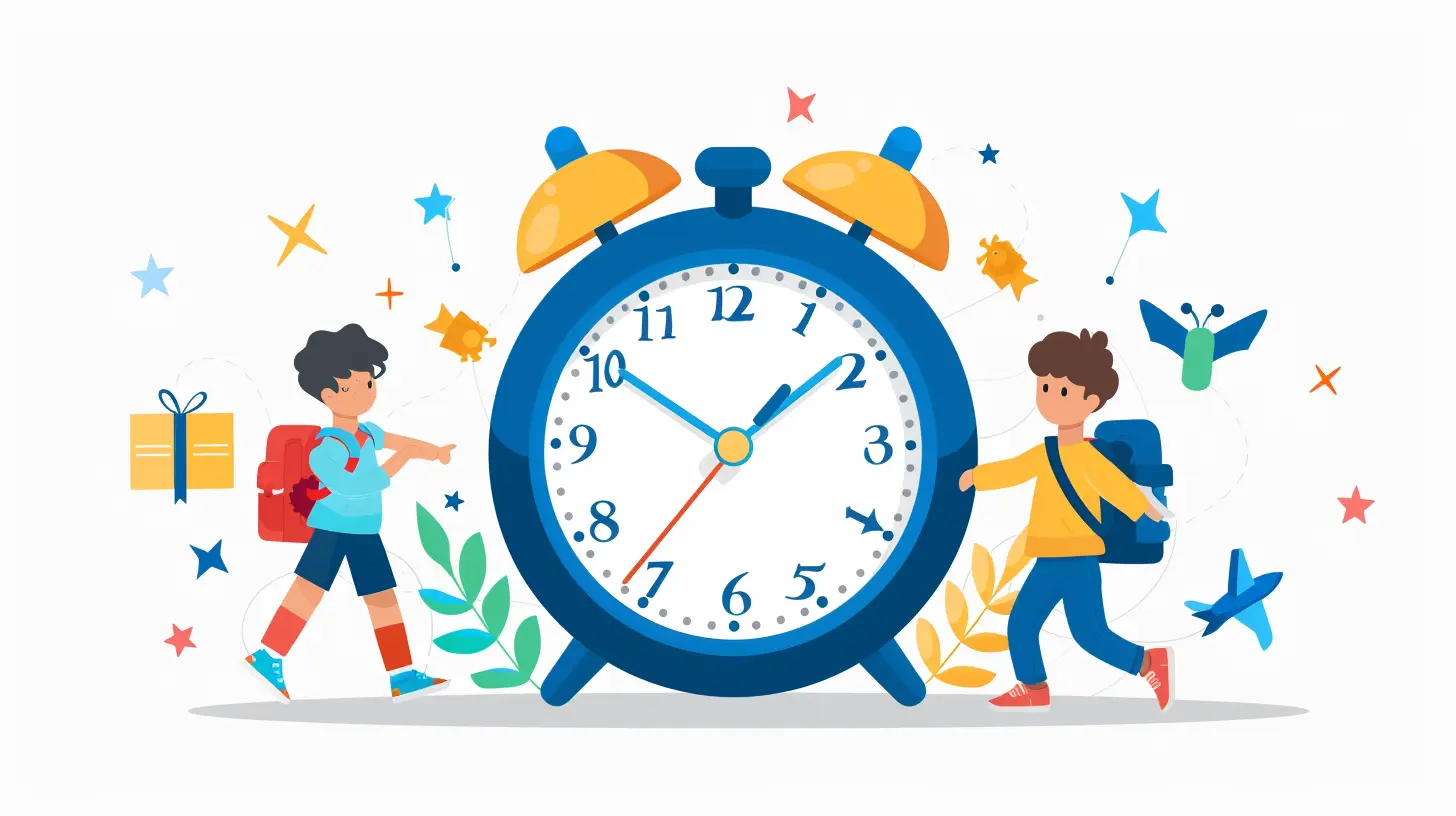The Role of Routine in Creating a Successful School Year
28 June 2025
Let’s be honest—getting ready for a new school year isn’t just about shopping for notebooks and the coolest pencil case. It’s about getting your family’s mindset in the right place. And guess what? That’s where routine steps in like a superhero with a cape made of calendars and to-do lists.
Whether you’re getting your energetic kindergartener out the door or helping a teenager navigate multiple classes and extracurriculars, having a solid routine is like giving your family a road map instead of driving blindfolded. So, let’s talk about how establishing a routine is not only helpful but essential for a successful school year.
Why Routines Matter (More Than We Like to Admit)
Let’s start with the basics—why does this thing called "routine" matter so much anyway?A routine brings structure, and structure brings predictability. And when kids (and let’s be real—adults too) know what to expect, the world feels a little less chaotic. That sense of predictability helps reduce anxiety, improves focus, and makes transitions—like returning to school after summer break—much smoother.
Think of it like a morning cup of coffee. Without it, everything feels off. But once it’s part of your rhythm, it becomes the start of a productive day.
The Science Behind Routine and Kids’ Success
Now, I wouldn’t bring in science if it didn’t help our case, right?Studies show that kids who follow daily routines tend to perform better academically, sleep more soundly, and display better emotional regulation. Having regular bedtimes, consistent mealtimes, and scheduled homework sessions works like magic on their overall development. Their brains are wired to thrive on consistency.
When kids stick to routines, it helps their internal clocks tick along nicely, which directly affects things like memory, attention span, and even mood. So yes, building a routine is basically giving your child a natural success booster without needing any fancy supplements or expensive tools.
Building a Back-to-School Routine That Actually Works
Creating a routine doesn't need to be overwhelming. It’s not about perfection; it’s about progress. These tips will help you lay the foundation without tears (for you or the kids):1. Start With Sleep – The Unsung Hero
We all know how cranky mornings can be when bedtime turns into a late-night Netflix marathon (for you) or endless excuses ("Just one more story, Mom!") on the kids’ part.Start adjusting bedtime at least two weeks before school begins. Ease into it by moving bedtime earlier by 15-minute increments. And don’t forget the wake-up time! You want their internal clocks synced and ready to go by the first school bell.
Quick Tip: Keep bedrooms tech-free at night. Blue light = bad sleep. Period.
2. Create a Morning Routine That Runs Like Clockwork
Mornings set the tone for the entire day. If they start in chaos, it’ll carry over into the classroom.Here’s a simple morning routine outline to kick things off:
- Wake up and stretch (instead of waking up and grumbling)
- Get dressed
- Eat a healthy breakfast
- Brush teeth and grab the backpack
- A moment of calm (play one song together or just share a positive affirmation)
When kids know exactly what comes next, they’re more likely to cooperate. And hey, you might even sneak in a few peaceful sips of coffee.
3. Homework Time = Show Time
Homework doesn’t have to be a battleground. With a set homework routine, it becomes just another part of the day.Pick a consistent start time and location—somewhere quiet, well-lit, and distraction-free. A routine also helps kids understand that this is work time, and their brain begins shifting into learning mode automatically.
Pro Tip: Break larger tasks into chunks. Kids work better with short bursts of effort followed by quick breaks.
4. After-School Decompression
Kids need a mental breather after school, just like we do after work.Building downtime into their routine helps them recharge. Whether it's reading a book, playing outside, or just lying on the couch with a snack, that time isn't wasted—it’s recovery time.
You might say, “But we’re so busy!” That’s okay. Even 15-30 minutes of downtime can make a big difference. It helps create balance and prevents burnout (yes, kids can burn out, too).
5. Mealtime Is More Than Just Food
Dinner time is golden. Not just for nutrition, but for connection.Try to eat together as a family, even if it’s just a few times a week. Sharing about the day helps kids process their experiences, and having meals at consistent times helps regulate their internal clocks.
Fun Habit: Take turns sharing your "high" and "low" of the day at the dinner table. It starts conversations and strengthens bonds.
6. Evening Routines That Wind Things Down
Evenings should signal "slow down" to the mind and body.A calming routine might look like:
- Packing up school bags for tomorrow
- Laying out clothes for the next day
- A warm bath or shower
- Reading time (bonus: it boosts literacy!)
- Lights out at the same time each night
Slow and steady wins here. Keep the routine consistent and calm. The goal is to help kids feel safe and secure—a sure way to encourage good sleep and reduce morning mayhem.
Adjusting Routines for Different Ages
All kids benefit from routines, but not all routines look the same. Let’s break it down by age group.Toddlers & Preschoolers
For the littlest ones, routines provide comfort. Keep it visual (use charts with pictures) and very simple. Repetition is your best friend.Elementary School Kids
They’re gaining independence, so you can let them have input. Choose routines together to build their confidence and make them feel in control.Tweens & Teens
This is where things get interesting. Teens want independence but still need structure. Work with them, not for them. Let them help build their routine—bedtime, study schedules, alarms—and they’ll be more likely to stick with it.When Life Throws a Curveball (Because It Will)
Let’s face it—life’s unpredictable. There will be forgotten lunches, missed buses, and days when nobody wants to follow the routine. That’s okay.Think of your routine like a safety net, not a rigid cage. It’s there to catch you when things sway a bit. Flexibility is key. The goal is consistency, not perfection.
If everything falls apart for a day or even a week, breathe. It’s not “all or nothing.” Just recalibrate and get back on track.
How Routines Help With Emotional Health
This is the part we sometimes overlook: routines don’t just help kids stay on task—they help them feel grounded.Kids (especially in today’s fast-paced world) can easily feel overwhelmed. A predictable routine gives them a sense of control and safety. That emotional stability helps reduce stress, improves self-regulation, and boosts confidence.
It’s not just about grades and productivity—it’s about raising emotionally healthy humans.
Encouraging Kids to Stick With the Routine
Building a routine is one thing. Getting your kids to actually follow it? That’s the real challenge.Here are some practical ways to make it stick:
- Use visual charts: Kids love checking boxes or using stickers.
- Involve them: Let them help design the routine.
- Reward consistency: Celebrate wins, even the small ones.
- Stay patient: Habits are built with repetition, not overnight miracles.
And here's the honest truth—it won't be perfect. Some days will go off the rails. That doesn’t mean the routine’s broken. It just means you’re human (and so are your kids).
Final Thoughts: Routines Are the Quiet Champions of School Success
If you take one thing from all this, let it be this: A strong routine isn’t about control—it’s about confidence.Confidence that your kids can manage their time. That your mornings don’t have to be chaos. That your family can handle all the busyness the school year throws your way and still come out smiling.
So, before the school bus pulls up or the first Zoom class starts, take a little time to sit down and map out your routine. Don’t aim for perfection. Just aim for consistency.
Little routines, done consistently, lead to big wins.
all images in this post were generated using AI tools
Category:
School ReadinessAuthor:

Noah Sawyer
Discussion
rate this article
2 comments
Velvet Wagner
Establishing a consistent routine is crucial for fostering a supportive learning environment. It helps children develop time management skills, reduces anxiety, and enhances their ability to focus. Encouraging flexibility within the routine can also promote resilience in adapting to change.
November 2, 2025 at 4:09 AM
Parisa Marks
Routines are the secret sauce for success! They transform chaos into calm, providing kids with a sense of security. Remember, a well-structured day fuels both focus and fun for a thriving school year!
July 9, 2025 at 2:42 AM

Noah Sawyer
Thank you! I completely agree—routines truly empower students by fostering stability and enhancing both their learning and enjoyment throughout the school year.


